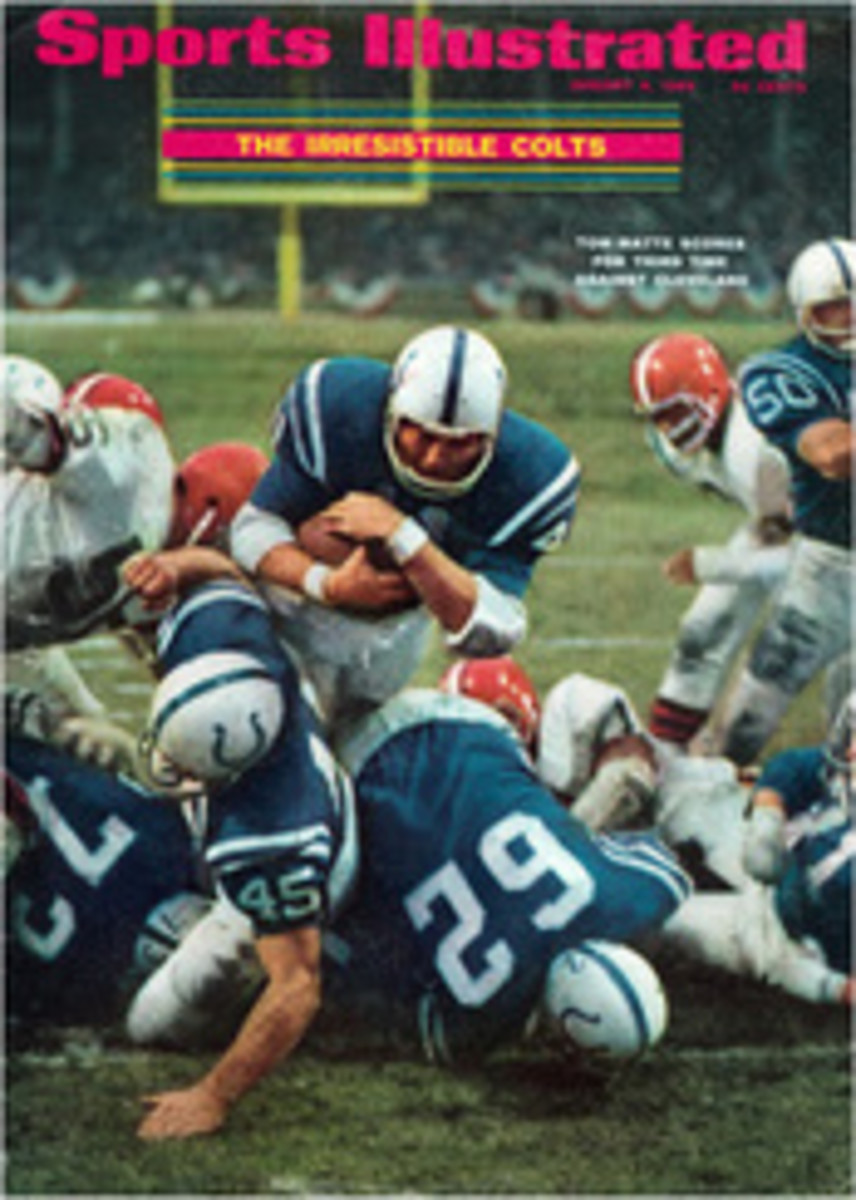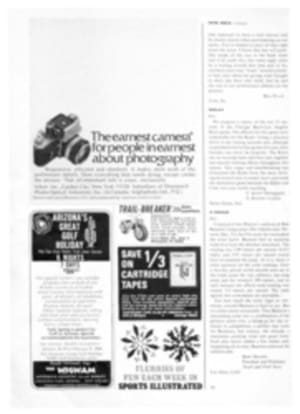
BITTERSWEET DREGS IN THE CUP
A celebration took place in a dressing room beneath the north grandstand of the Memorial Drive tennis courts in Adelaide, Australia last week that should have gladdened the hearts of everyone present but somehow did not. Three bottles of American champagne (Great Western) and an equal part of Australian beer were mixed together in the great sterling-silver cup that is symbolic of international supremacy in tennis and drunk up by an American team which was only the third to win the Davis Cup for the U.S. since 1949. There was a concerted effort on the part of all to give the occasion an abandoned air. But, like the mixture of beer and champagne, it had a bittersweet taste.
Granted, the long-awaited U.S. victory had been supreme. The Americans had won handily by four matches to one, and U.S. Open champion Arthur Ashe, who had been the team's solid pillar through the five previous meetings that had led to the Challenge Round, had himself said: "Winning the Davis Cup means more to me than winning the Open." But Ashe had also said, "The best players weren't here," and there was the bitter ingredient that soured the cup. The triumph of the American amateurs, which climaxed the most revolutionary year in the history of modern tennis (the year of the Opens), was shadowed by the realization that somewhere and by someone better tennis was being played under auspices less rigorously amateur.
Competition among professionals was not a matter for serious consideration in 1900 when the cup was presented by Dwight Davis, then a young Harvard undergraduate who later became Secretary of War under Coolidge. Tennis was a game for the affluent played at private clubs and obviously amateur through and through. All that had changed drastically by last week when the 57th Challenge Round got under way the day after Christmas, though the trappings and some of the surrounding attitudes had not. After the seven ball boys and 13 linesmen and umpires—all dressed in gray, including their canvas hats—had marched in formation to their positions, and after various officials, ambassadors, excellencies and ladies had been seated, Harry Hopman took his place at courtside as captain of the Australian team, just as he had 20 times before.
After Hopman's entrance U.S. Cup Captain Donald Dell—Hopman's opposite number in almost every way—took his place. Half Harry's age, Dell is a Washington, D.C. attorney who took leave from his law firm to head the Davis Cup effort. He is active in politics (he worked for Sargent Shriver and campaigned for Bobby Kennedy), ambitious for himself, dogmatic to the point of rudeness, absolutely loyal to any goal he seeks and utterly incapable of sitting still for five minutes.
For the first match Dell had chosen Clark Graebner to go against Australia's Bill Bowrey, and the choice said much about both Americans.
Graebner is a power player but an often erratic one. His service is his strong point but he strokes it so awkwardly that he more often than not follows through the wrong way. One wonders how he can remain standing. During 1968 he had played brilliantly at Wimbledon and Forest Hills. He reached the semifinals in each tournament, but in the preceding two Davis Cup meetings, against Spain and India, he had suffered losses to Manuel Santana and Ramanathan Krishnan and looked bad in both. Then, the day after the India matches were over, he reinjured a chronic bad back and was unable to lift a racket for nearly three weeks. He reverted to a petulant attitude that had been characteristic of him during too much of his early career. When the team selections were made on Dec. 15 following a tournament in Brisbane in which he had lost in the first round to an unknown Italian, Graebner was replaced by Charlie Pasarell and told bluntly by Dell, "You're a quitter, you're off theteam and as far as I'm concerned you can go home."
Dell at that point was prepared to play either Pasarell or Stan Smith in the second singles position behind Ashe, but under a new cup rule he could make a substitution on his four-man team within the first five days after the team was named. In that period, Graebner played six practice matches—three against Pasarell, two against Smith and one against Ashe—and lost only one set. On the 21st he was reinstated, and finally, on Christmas Day, the day of the cup draw, Dell told him he would play.
The reinstated Graebner strove evenly against Bowrey for the first four sets of their match, each of them taking two. Then, in the first game of the fifth set, Graebner suddenly found himself behind on his service 15-40. He battled back to deuce, and four points later, held. That was the turning point, and it was as close as Bowrey came to winning. Graebner broke Bowrey's service immediately and ran out the set and match 8-10, 6-4, 8-6, 3-6, 6-1. The tennis was not scintillating, but for Graebner it was a triumph. Dell said afterward: "That wasn't Clark's best tennis by far, but I think it was the best match he ever played. He didn't get temperamental and he didn't quit, and I'm proud of him for that."
The second singles match put Ashe against Ray Ruffels, an erratic lefthander whose shotmaking was perhaps the most classic but not the most effective of those playing in the Challenge Round. By now the weather, which had been unseasonably cool at the start of the day, was cold and windy, and Ashe, who had been bothered by tennis elbow for more than a month, was not helped by the chill. Like Bowrey against Graebner, Ruffels got the jump on his American opponent, winning the first set and breaking early in the second, but Ashe never allowed him to keep the advantage, and once he pulled even the match was quickly over, 6-8, 7-5, 6-3, 6-3.
And so, at the end of the first day, Australia was behind 2-0. Only one team in Davis Cup history had come back from that deficit to win a Challenge Round—the 1939 Australian team of John Bromwich and Adrian Quist that defeated America's Bobby Riggs, Frank Parker and 18-year-old Jack Kramer. The doubles team chosen by Dell was Stan Smith, 22, and Bob Lutz, 21, who have won just about every title available to them.
For Australia, Hopman chose Ruffels and John Alexander, the powerful Sydney-sider who had been mentioned prominently as a possible singles choice. At 17, Alexander was the youngest player ever to participate in a Challenge Round, breaking by a few months the record set by Kramer. Ruffels and Alexander had never played together before, and their lack of teamwork was telling. Smith and Lutz lost only 13 points during their 14 service games, and only once did the Australians have a break point against them in the 6-4, 6-4, 6-2 triumph.
The Davis Cup had been won and would be returning home after an absence of five years. The triumph was welcome but hollow as well. The crowds were disappointing and the enthusiasm of those who did come was something less than unrestrained. The only excitement shown by the Aussies occurred on the final day when, after Graebner had gutted out his second victory (over Ruffels), Bowrey came back to defeat Ashe in four sets and avert a humiliating shutout by the U.S.
After the final match the two teams returned to the center court for the formal presentation of the cup to Dell by the governor of the State of South Australia, Sir James Harrison, while the flags of the 50 Davis Cup nations fluttered valiantly in the fading sunlight. And that, in another year, might have been the end of it till next time.
But 1968 was a different year, and what was perhaps the most significant meeting of this Davis Cup took place not on the courts but in private. The top officials of the world's four major tennis nations closeted themselves for two days and drafted a statement which, if implemented by their associations back home, could restore the vigor to cup competition that was sadly lacking last week. In essence, the statement urged all of tennis to forget the absurd and artificial distinctions among amateurs, professionals and so-called "registered" competitors and to group them all under one simple and honest classification—players.
Under such a rule Arthur Ashe, who is indisputably America's best player, could be both joined and opposed by others of equal stature. Then Davis Cup competition could once again be the best in fact as well as name.
PHOTO
Brilliant but erratic, Clark Graebner did poorly in the early cup rounds and was nearly fired.
PHOTO
Arthur Ashe won easily over Ray Ruffels.

